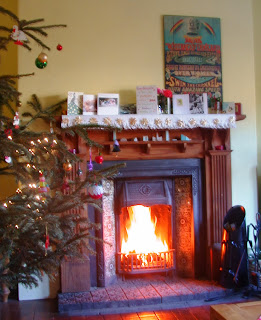I wonder what Edith Ashworth made of Chorlton-cum-Hardy.
She had been born in Northenden in 1880, and lived with her father and mother and four siblings in a small cottage off Mill Lane. Her father described himself as a labourer, while her eldest sister was employed as a milliner.
Just opposite their home was the river and the mill, while just a few minutes’ walk to the east beyond Palatine Road were open fields stretching all the way to Sale.
By contrast Chorlton-cum-Hardy was undergoing one of those revolutions which would see large parts of the township transformed into rows of modest properties, catering for the “middling people”, many of whom worked in the city but wanted to live on the edge of the countryside.
Some were professionals, while others were managers and yet more worked as clerks, and secretaries. They rented their homes, but many still found money to employ a servant, which was always a mark of distinction.
And in the April of 1901 Edith was working as a general servant for Mrs. Eliza Jones, at 7 Maple Avenue.
Mrs. Jones employed only the one servant, who and these were often known as “maids of all work” because they pretty much did everything from the cooking and cleaning to turning down the beds and much more, which in the case of Maple Avenue involved looking after nine rooms along with the needs of Mrs. Jones and her two grown up children.
The family had moved into the house when it was built in 1895, and over the next century kept a unique photographic record of the house and the surrounding streets, allowing us to place Edith in the very rooms she cleaned and kept tidy.
Nor was she the only servant in the avenue. In total there were four servants working in four of the seven occupied houses. All were “maids of all the work”, and some catered for families much larger than at 7 Maple Avenue.
And like a century earlier when we were still a rural community, none of the four servants were local, three came from Cheshire and a fourth from Stretford. Some people might be surprised at this, but it was that simple rule, that if servants were local they might well take stories of the household home, and those stories might well become the gossip of the township.
Only in one respect was Edith different from her fellow servants and that was her age. She was 21, while Mary Ann Jones at number 15 was 18 years old and the remaining two were just 15.
Sadly, there is little more that I can find out about Edith, for like so many of her class, history has not been kind, and so far I have found only one other reference, but it is a tantalizing one, because on March 10th 1904 she sailed from Liverpool to Halifax in Canada on board the Tunisian. She shared the journey with her 17-year-old sister Florence, and while I know they arrived, the rest as they say awaits further research.
As for 7 Maple Avenue, it stayed in the possession of the family until 1997, and I am indebted to Ray Jones, who is one of the descendants, for permission to reproduce photographs of the house.
Loation; Chorlton-cum-Hardy
Pictures; 7 Maple Avenue, date unknown, courtesy of Ray Jones






























.jpg)
.jpg)
.jpg)


















